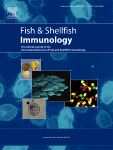Development of a Rainbow Trout (Oncorhynchus mykiss) Intestinal In Vitro Platform for Profiling Amino Acid Digestion and Absorption of a Complete Diet

Abstract
The ever-increasing number and variation of raw materials utilized to provide alternative feed formulations continues to allow for a more sustainable and flexible approach. Testing all these options in vivo is still the most robust and reliable manner to pick the best raw material candidates, but it requires the use of large numbers of animals and is time-consuming and expensive. Therefore, we are developing an in vitro platform that can provide a reliable evaluation of new ingredients. The main aim of this work was to combine an in vitro digestion protocol of extruded, commercially relevant aquafeeds with the exposure of intestinal epithelial cells to the extracted bio-available fraction (BAF). The results show that 250,000 cells/cm2 represents the optimal seeding density and that up to 50% BAF concentration for up to 24 h had no negative effects on the epithelial barrier morphology and function. It is possible to determine amino acid digestibility and bioavailability in all the experimental conditions (with and without BSA, at 25% and 50% dilution) and at all time points (0, 6, and 24 h). However, BAF concentration, the medium used for its dilution, and the length of exposure to the different epithelial cell lines can all influence the results and, therefore, must be selected according to the final aim of the experiment.
